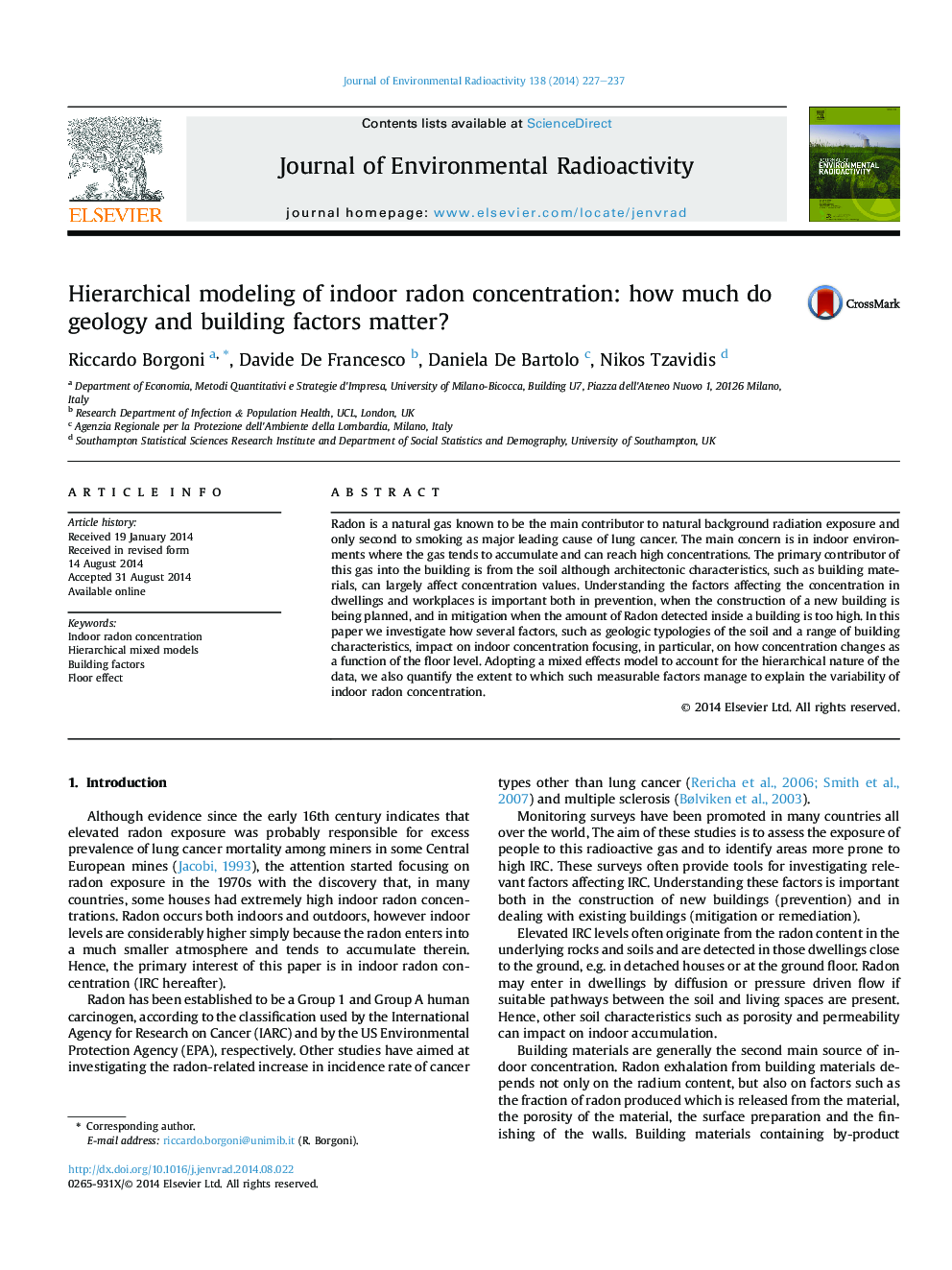| Article ID | Journal | Published Year | Pages | File Type |
|---|---|---|---|---|
| 8082802 | Journal of Environmental Radioactivity | 2014 | 11 Pages |
Abstract
Radon is a natural gas known to be the main contributor to natural background radiation exposure and only second to smoking as major leading cause of lung cancer. The main concern is in indoor environments where the gas tends to accumulate and can reach high concentrations. The primary contributor of this gas into the building is from the soil although architectonic characteristics, such as building materials, can largely affect concentration values. Understanding the factors affecting the concentration in dwellings and workplaces is important both in prevention, when the construction of a new building is being planned, and in mitigation when the amount of Radon detected inside a building is too high. In this paper we investigate how several factors, such as geologic typologies of the soil and a range of building characteristics, impact on indoor concentration focusing, in particular, on how concentration changes as a function of the floor level. Adopting a mixed effects model to account for the hierarchical nature of the data, we also quantify the extent to which such measurable factors manage to explain the variability of indoor radon concentration.
Related Topics
Physical Sciences and Engineering
Energy
Nuclear Energy and Engineering
Authors
Riccardo Borgoni, Davide De Francesco, Daniela De Bartolo, Nikos Tzavidis,
